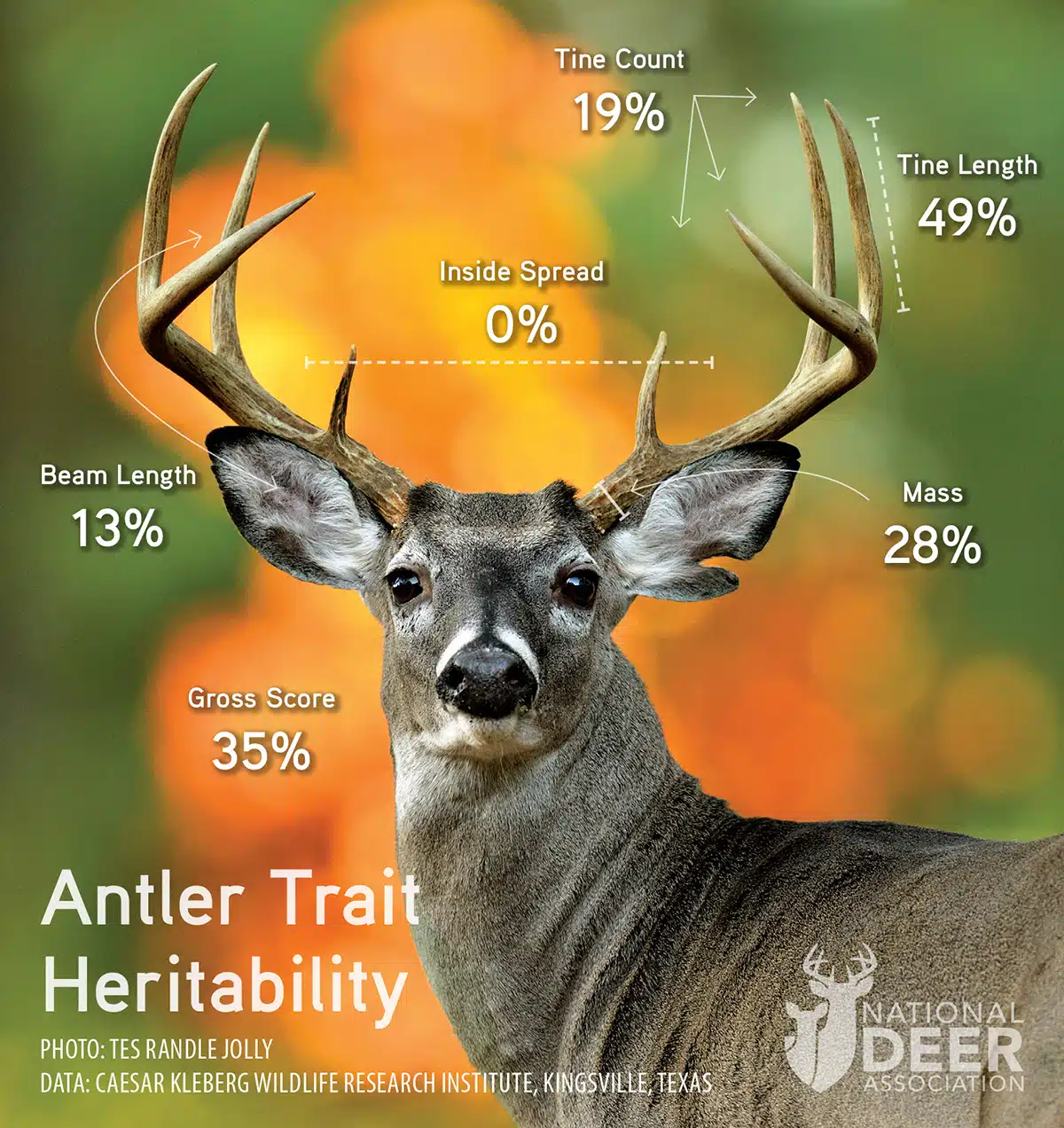STRIKE 3 FOR THE MYTH OF THE GENETIC “CULL BUCK”

By Lindsay Thomas Jr. / National Deer Association
The latest scientific attempt to improve wild deer antler genetics failed to find a practical method that works in the wild, but it helped shed more light on why the genetic “cull buck” remains elusive: Because antler heritability is weak at best. The antlers an adult buck carries on his head, whether they are above or below average for his age, are an unreliable predictor of the antlers his fawns will one day grow.
The Caesar Kleberg Wildlife Research Institute (CKWRI) at Texas A&M-Kingsville launched the South Texas Buck Capture Project in the late 1990s, almost 30 years ago. Researchers have captured and measured thousands of wild bucks across numerous ranches in the years since, with many of the bucks being recaptured across multiple years, leading to work on antler growth, the spike question, nutrition, habitat and genetics.
Waves of studies and reports from the project have gradually debunked old myths about deer genetics and culling. Those myths are still not dead. However, they are greatly weakened from many years ago when most hunters readily accepted the false idea that a trigger pull can change wild deer genetics.
The new work is the third major scientific study that tested culling to alter deer genetics and improve future antlers. I’ve reported on two of them already, and this article represents the third. Is it finally strike three for the genetic “cull buck”? Before I tell you about the new study, it’s important for you to be familiar with the first two. CONTINUE READING FULL STORY
Discover more from HuntingOfficer
Subscribe to get the latest posts sent to your email.
